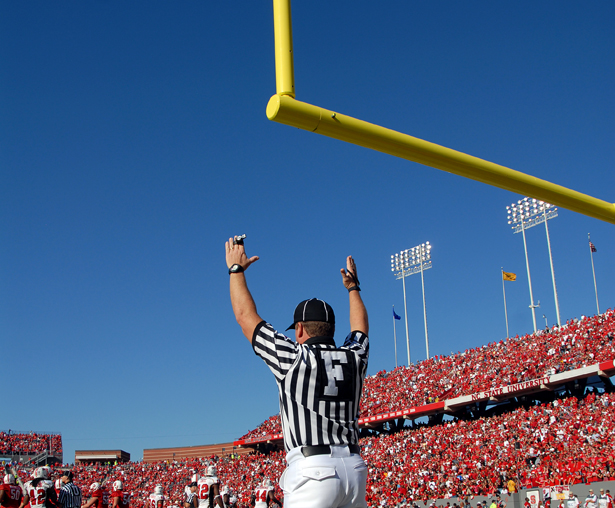Wide Left: Study Shows that Holders Play Key Role in Field Goal Accuracy

NFL and college football teams are back in action, and their success often hinges on the accuracy of their field goal kickers. When the field goals are made, kickers are heroes. When they miss, they’re goats. But a study by aerospace researchers shows that kickers aren’t always at fault – the way the ball is held can affect where the ball goes.
William Lee was one of millions of people who watched the University of Texas barely make a last-second field goal to beat the University of Nebraska in the 2009 Big 12 championship game. But two things set Lee apart from most of the other viewers. First, he had been a long snapper on NC State’s football team when he was an undergraduate, so he paid particularly close attention to how the ball was snapped and held prior to Texas’s field goal attempt. Second, by 2009 he was pursuing his Ph.D. in mechanical and aerospace engineering at NC State, and he had a keen interest in aerodynamics.
As a result, while most viewers saw a field goal that sailed just inside the uprights, Lee saw that the ball was held at an awkward angle and that the kick swerved to the left before veering back to the right and sneaking just inside the left goalpost. He wanted to know if the hold was responsible for the ball’s erratic flight path.
Lee worked with two of his professors, Andre Mazzoleni and Mohammed Zikry, to develop a computer model that could determine how and whether the trajectory of a field goal kick is affected by the way the ball is held.
“The model was created using techniques that were initially developed to model spacecraft dynamics,” Mazzoleni says. “We figured that if those techniques could successfully model the trajectories of spinning objects such as satellites, they should be capable of modeling the trajectory of a rotating football.”
Using the model, the researchers found that if the ball is leaning to the left or right, it will affect the trajectory of the football. And the more it leans, the more pronounced the effect, which is the result of complex interactions between the rotational motion and aerodynamic forces acting on the football.
“For example,” Mazzoleni says, “if the ball is tilted 20 degrees to the left for a 45 yard field goal attempt, it will sail up to 3.5 feet to the left before hooking back to the right.” And any football fan can tell you that 3.5 feet can be the difference between winning and losing. (Just ask the University of Nebraska.)
A paper on the research, “Aerodynamic effects on the accuracy of an end-over-end kick of an American football,” was published in Sports Engineering earlier this summer. In the paper, lead author Lee – now an engineer for NASCAR giant Stewart-Haas Racing – notes that “This study in no way lets kickers completely off the hook.” There are still plenty of ways for a kicker to botch a field goal attempt.
So don’t worry, football purists – you can still blame the kicker. Some of the time.
- Categories:


